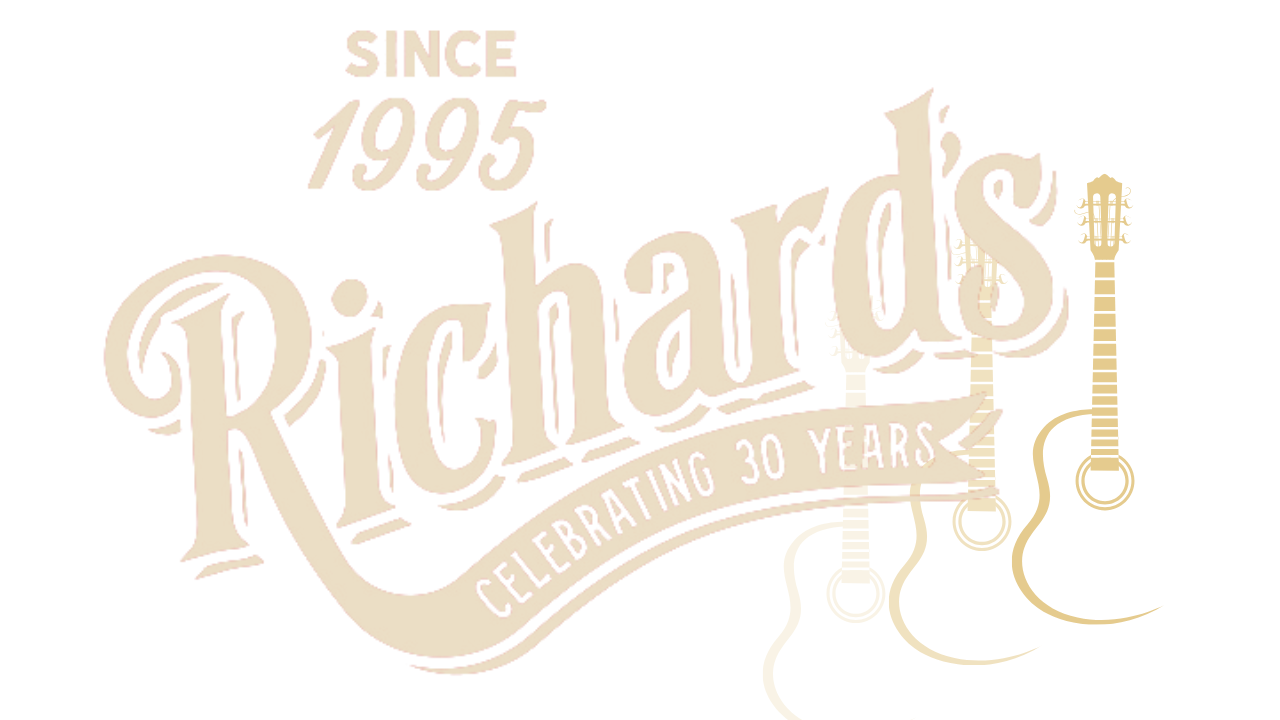
A Simple Guide To Electric Guitar String Gauges & When To Use Them
|
|
|
Time to read 2 min


|
|
|
Time to read 2 min
Finding the perfect set of electric guitar strings can be as intricate as crafting a melody. The string gauge you choose plays a pivotal role in shaping your tone and playability — so choosing the right one for your musical style matters more than you might think.
In this guide, we’ll demystify electric guitar string gauges, explain how they affect sound and feel, and help you discover which types work best for different genres.
A string gauge refers to the thickness of a guitar string, measured in thousandths of an inch.
For example, a “.010” high E string is lighter (thinner) than a “.012.”
The gauge you choose affects:
Tone – thicker strings sound fuller and louder
Feel – lighter strings bend more easily
Versatility – heavier strings handle drop tunings better
Let’s explore the main categories of string gauges and what kind of players they suit best.
Light gauge strings have a thinner diameter and lower tension, making them:
Easier to bend and play fast passages
Perfect for legato phrasing and expressive soloing
Ideal for:
Rock • Pop • Blues
If your playing focuses on speed, fluid bends, and smooth phrasing, light gauge strings will feel nimble under your fingers — letting your leads sing.
Medium gauge strings strike a great balance between tone and comfort.
They deliver:
Solid tension for rhythm playing
Balanced tone for lead work
Enough flexibility for expressive phrasing
Ideal for:
Classic Rock • Country • Jazz
This set is the “do-it-all” option — offering a robust, full sound without being too stiff or too slinky.
Thicker strings mean more tension and more output.
Heavy gauge sets provide:
Higher volume and sustain
Better stability in lower tunings
Stronger attack for aggressive playing
Ideal for:
Metal • Hard Rock • Drop Tunings
If you crave thick, meaty tone and play with a heavy pick hand, heavy gauges deliver the thunder.
Want flexibility and power? Hybrid string sets mix different gauges within the same pack — for instance, lighter treble strings (for leads) and heavier bass strings (for rhythm).
This gives you:
The bendability of light strings
The punch and sustain of heavier ones
Perfect for:
Players who move between rhythm and lead, or want a completely personalized feel.
As you explore the world of electric guitar string gauges, remember:
Your choice directly shapes your tone, comfort, and expression.
Light gauge: for nimble bends and fast play
Medium gauge: for all-round versatility
Heavy gauge: for power, projection, and down-tuned riffs
Hybrid sets: for a custom feel that matches your touch
Armed with this knowledge, you can confidently choose the strings that fit your music — whether you’re strumming soulful blues, shredding metal riffs, or crafting jazz melodies.
The right string gauge isn’t just a technical choice — it’s part of your sound.
Happy playing! 🎸